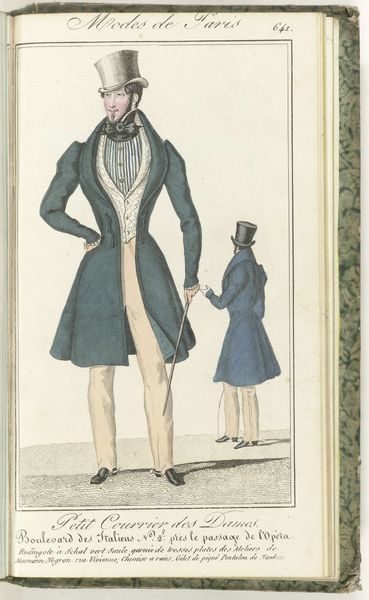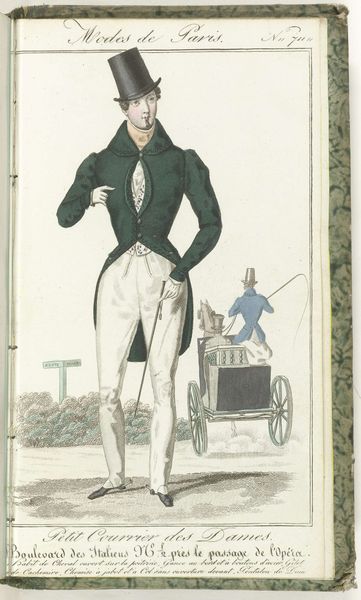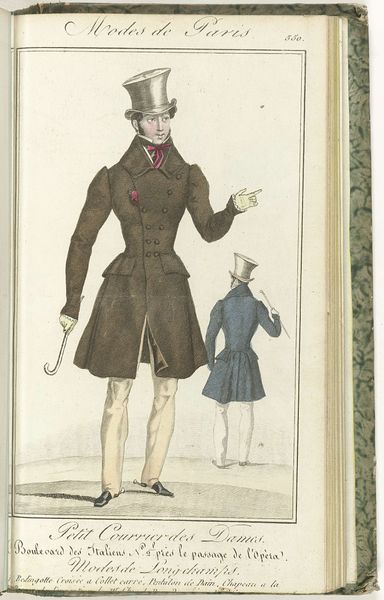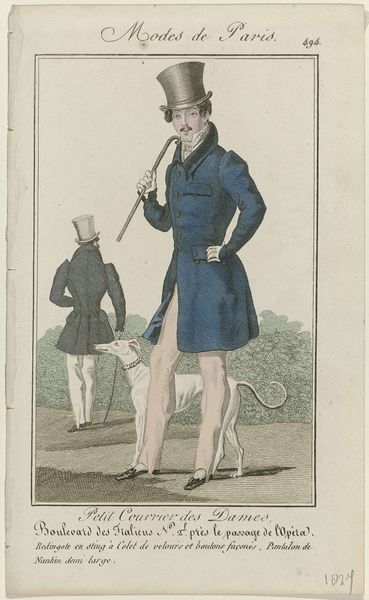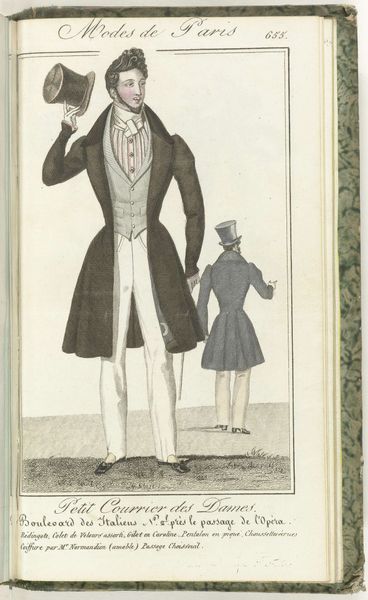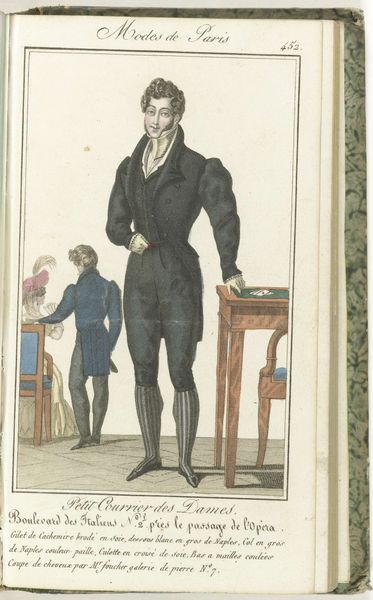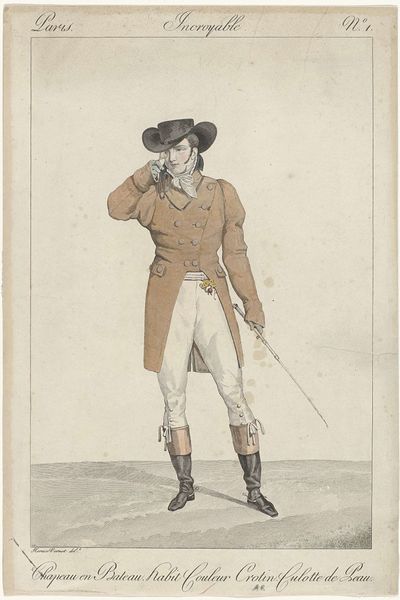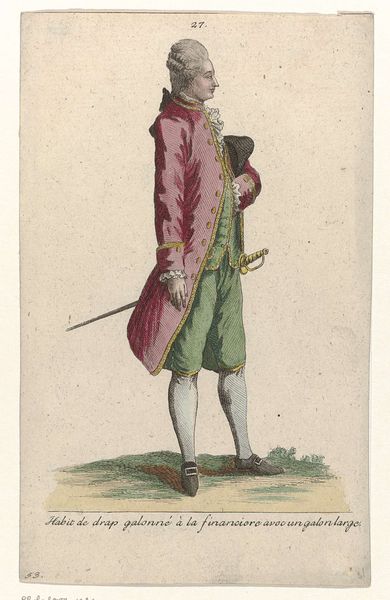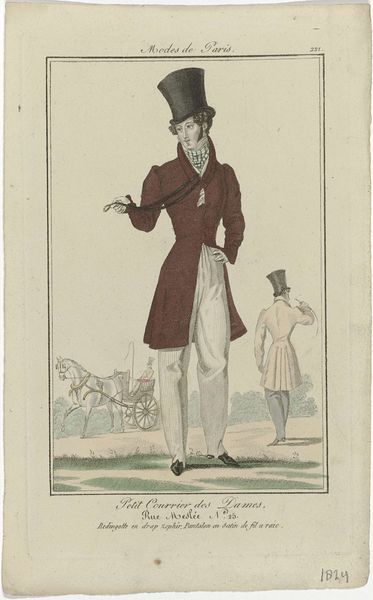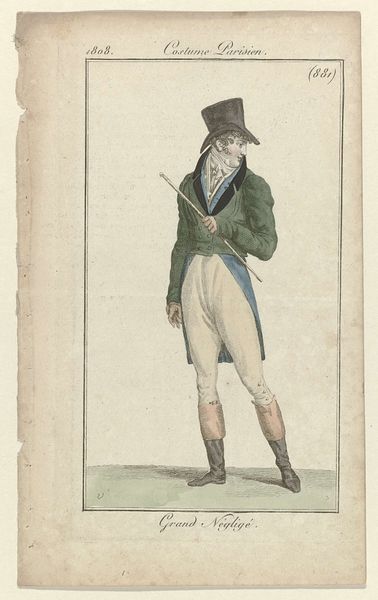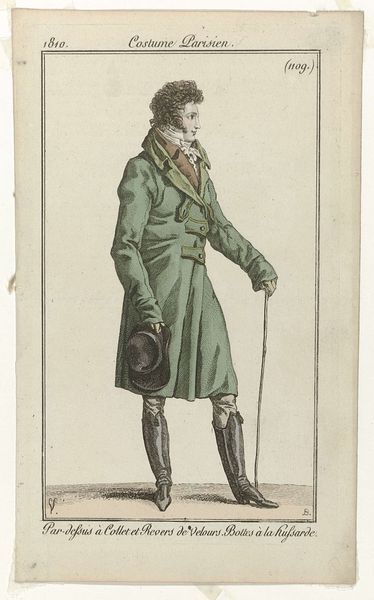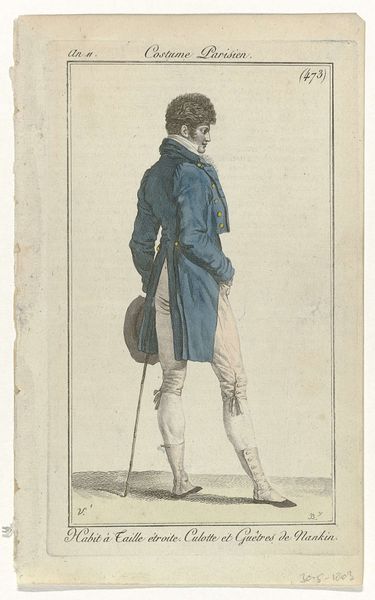
Petit Courrier des Dames, 25 février 1830, No. 704 : Chapeau Napolitain... 1830
0:00
0:00
anonymous
Rijksmuseum
print, watercolor, engraving
#
portrait
# print
#
watercolor
#
romanticism
#
cityscape
#
watercolour illustration
#
genre-painting
#
engraving
Dimensions: height 201 mm, width 113 mm
Copyright: Rijks Museum: Open Domain
Curator: Looking at this piece, I immediately feel transported to a world obsessed with presentation. The overall impression is one of careful composure and constructed identity. Editor: Indeed. This is a page from *Petit Courrier des Dames*, specifically issue number 704 from February 25th, 1830. It’s an engraving with watercolor, a style that exemplifies the romantic sensibilities of the era and, more importantly, a moment in the rapidly changing fashion of Parisian men. Curator: The main figure’s gesture, the raised hand, it feels almost performative. Is he inviting us into his world of style, or merely displaying it? It reminds me of images used today that broadcast carefully curated online personas. Editor: Perhaps it is both! The engraving meticulously details his attire: the “Chapeau Napolitain” referenced in the title, the velvet cravat, and the gros de Naples waistcoat. These weren't just garments; they were signifiers of status and belonging in the burgeoning culture of Parisian modernity. The full title is longer: *Petit Courrier des Dames, 25 février 1830, No. 704: Chapeau Napolitain, Cravate en Velours, Gilet en gros de Naples, Redingote.* Curator: I find the other figure on horseback fascinating, fading into the background. What cultural continuity can we glean from the obscured rider and prominent main figure? Editor: The inclusion of the rider in the background subtly reinforces a particular vision of idealized masculinity as well as alluding to traditional forms of aristocratic presentation in contrast with the city gent, whose focus is an urban experience. This illustration served as a tool that was trying to democratize a particular mode of upper-class presentation, while reinforcing class structures. The fashion industry's early methods aimed to trickle down from elites, all within the setting of Romantic Paris, with both figures taking to the street in similar sartorial display. Curator: Considering our era of street-style blogs and influencers, the image highlights a remarkable persistence in the human drive to signify through dress, adapting it over time as forms and social relations evolve. Editor: Agreed. Looking at this work from the Rijksmuseum, it acts as an ancestor, documenting this very human performance, and it shows us the power of image making in visualizing cultural status then and today.
Comments
No comments
Be the first to comment and join the conversation on the ultimate creative platform.
